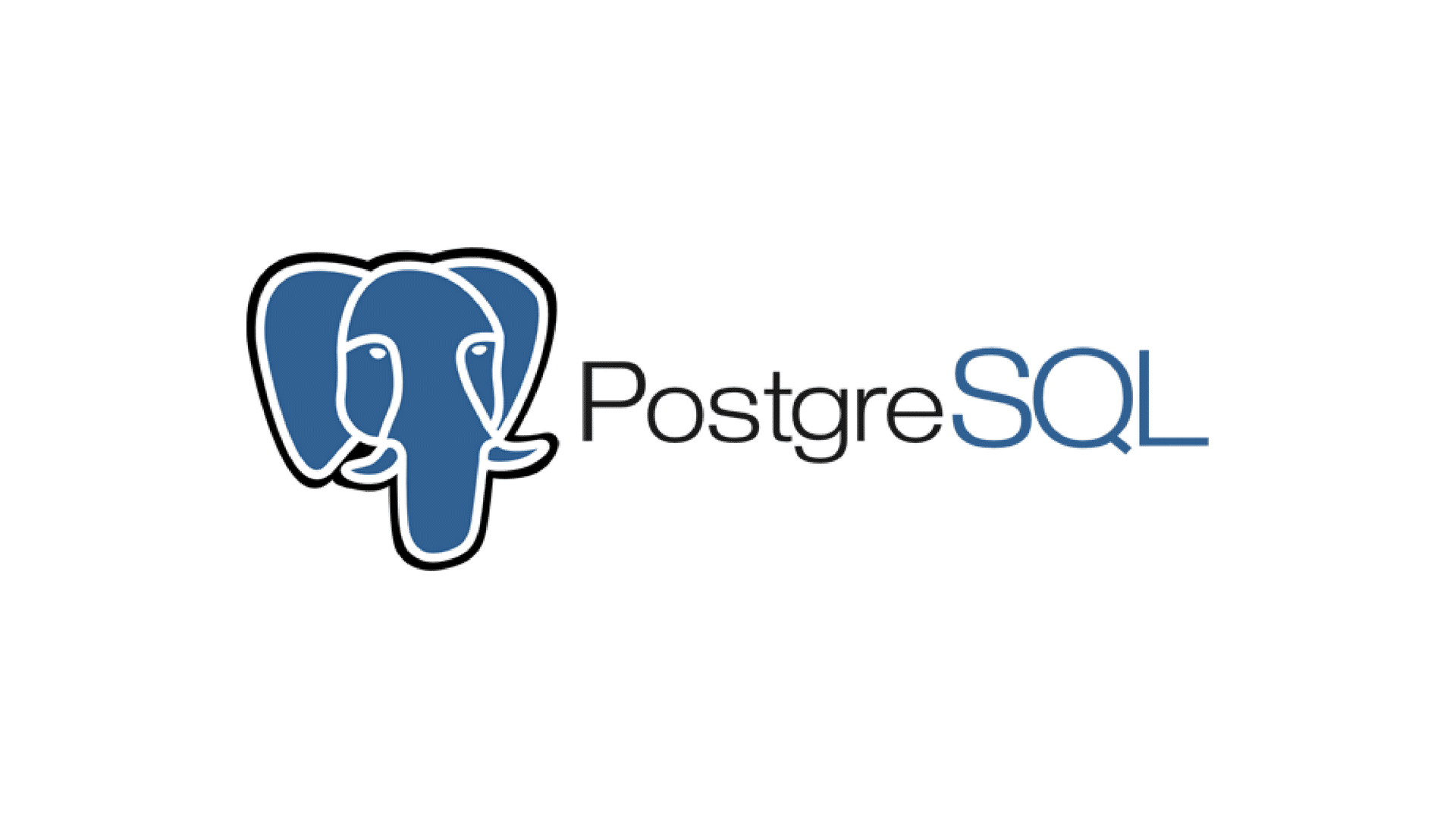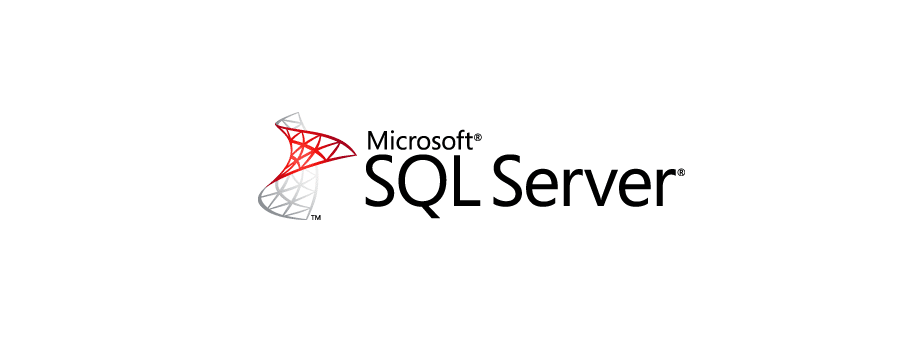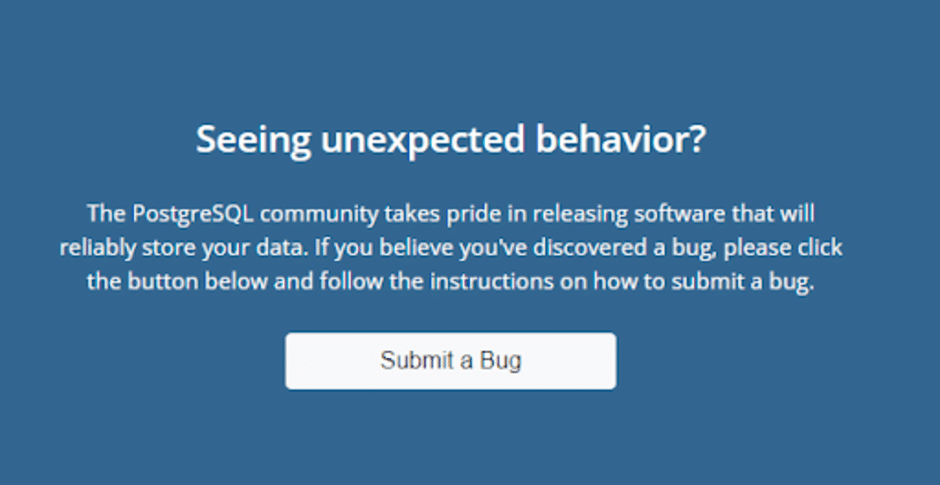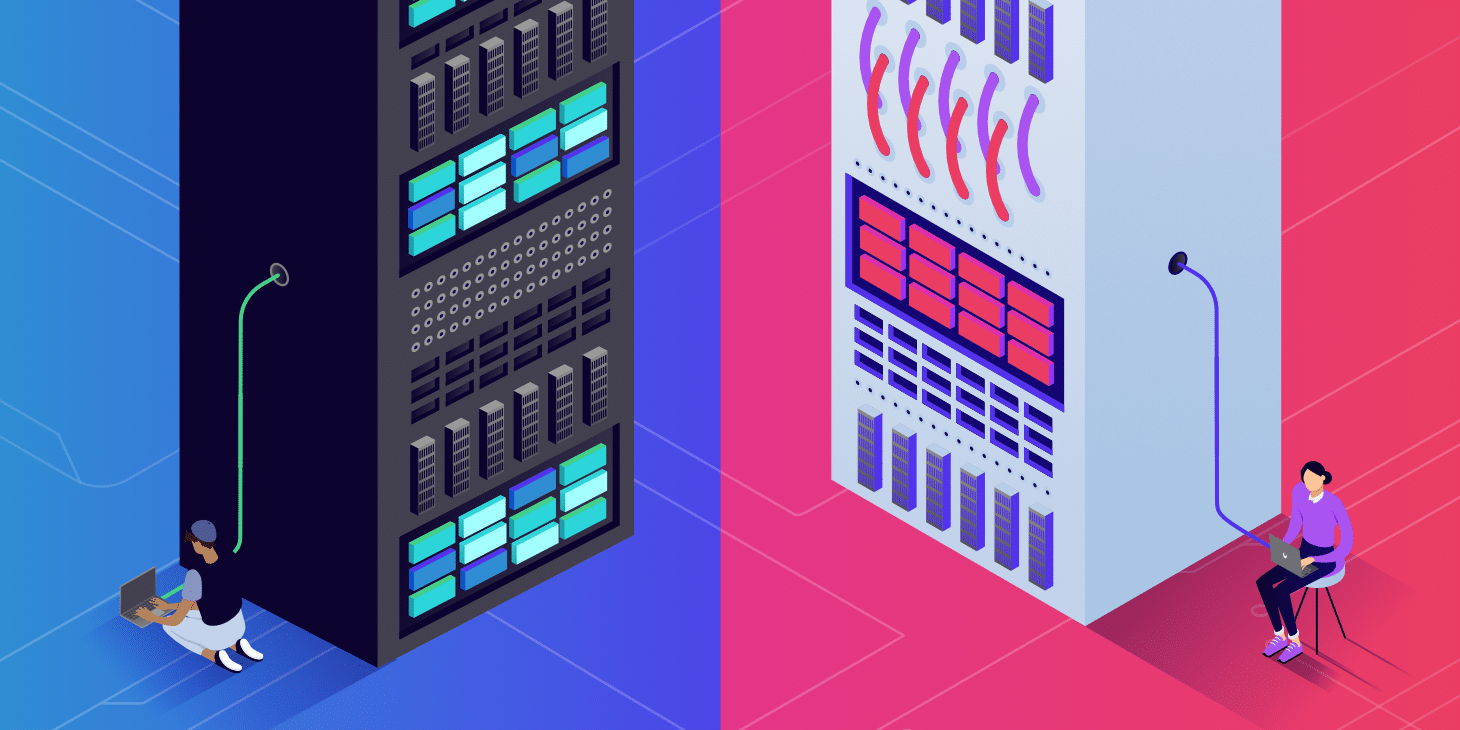With a vast assortment of databases to choose from in the market, users can often mull over PostgreSQL vs SQL Server to iron out the better option for their use case. Organizations that leverage PostgreSQL for their operations might want to switch to a database like Microsoft SQL Server since it primarily caters to different data warehousing solutions, ecommerce, and other lines of business.
Historically, Microsoft SQL Server has been a favorite for organizations that depend on other Microsoft products, but PostgreSQL has made rapid strides to rise to the top of the niche not only because of the benefits of going open-source but also for its active community of users and handy features.
This is what brings us to this discussion. Comparing PostgreSQL and SQL Server will help you better understand the possible advantages and trade-offs of the two systems, and which one is better suited for your purpose.
Let’s dig in!
What Is PostgreSQL?

PostgreSQL has established itself as an enterprise-class, advanced open-source database that supports both JSON (non-relational) and SQL (relational) querying. This powerful and stable database management system has been backed by over thirty years of active community development that has contributed to its reputation for integrity, reliability, resilience, performance, and correctness.
PostgreSQL is used as the main data warehouse or data store for various mobile, web, analytics, and geospatial applications. PostgreSQL also boasts a rich history of supporting advanced data types along with performance optimization commonly found across its commercial database counterparts, like Microsoft SQL Server and Oracle.
On top of being free and open-source, PostgreSQL is also highly extensible. For instance, you can generate custom functions, define your data types, and even write code from various programming languages without having to recompile your database!
History
Here’s a brief overview of PostgreSQL through the years:
- Ingres was first developed in 1977.
- Michael Stonebraker and his associates developed Postgres in 1986.
- In 1990, support for PL/ pgSQL and ACID compliance was added to PostgreSQL.
- NYCPUG (New York City PostgreSQL User Group) joined the PgUS (United States PostgreSQL Association) back in 2013.
- In 2014, the PGconf ushered in a new era for PostgreSQL users.
Main Features
Now, let’s move on to take a look at some features of PostgreSQL that make it such an indispensable tool in the marketplace:
- Standards compliance and reliability: PostgreSQL’s write-ahead logging allows it to stand out as a highly fault-tolerant database. PostgreSQL is also ACID-compliant and provides full support for views, foreign keys, triggers, joins, and stored procedures, in various languages. It includes most SQL: 2008 data types, including BOOLEAN, NUMERIC, INTEGER, DATE, VARCHAR, TIMESTAMP, INTERVAL, and CHAR.
- Robust extensions: PostgreSQL houses robust feature sets such as point-in-time recovery, multi-version concurrency (MVCC), tablespaces, granular access controls, and online/hot backups. PostgreSQL is also locale-aware for case sensitivity, sorting, and formatting. It is highly scalable in both the quantity of data it can manage and in the number of simultaneous users that can be accommodated.
- Open-source license: You can avail of the PostgreSQL source code under an open-source license, giving you the freedom to modify, use, and implement it as you see fit, without any charge. On top of this, PostgreSQL incurs no licensing cost, which gets rid of the risk of over-deployment. PostgreSQL’s community of enthusiasts and contributors regularly find fixes and bugs, lending to the overall security of the database system.
Use Cases
PostgreSQL’s versatility allows it to be leveraged in a vast range of use cases like:
- Federated hub database: PostgreSQL’s JSON support and foreign data wrappers allow it to link with other data stores — including NoSQL data types — and serve as a federated hub for polyglot database systems.
- General-purpose OLTP database: Large enterprises and startups both use PostgreSQL as the main data store to support their internet-scale applications, products, and solutions.
- Geospatial database: PostgreSQL supports geographic objects when used with the PostGIS extension. It can also be used as a geospatial data store for geographic information systems (GIS) and location-based services.
- LAPP open-source stack: PostgreSQL can also run dynamic apps and websites as part of a robust alternative to the LAMP stack. LAPP stands for Linux, Apache, PostgreSQL, Perl, PHP, and Python.
What Is SQL Server?

SQL Server was developed by Microsoft as a relational database management system that boasts a long history, thirty-two years, to be precise. Microsoft SQL Server is considered a software product with the main function of retrieving and collating data as requested by other software applications.
These applications might either run on a different computer across a network or on the same computer. Microsoft SQL Server has seen a lot of updates over the years, to become one of the best supported and one of the most reputed RDBMSs in the market today.
SQL Server owes a large chunk of its popularity to its maker, Microsoft. When MS SQL Server was in its nascent stage, Microsoft had already established itself as a tech giant.
SQL Server has managed to make a mark as a database management system with its wide range of applications and tools that simplify working with data. Its comprehensive graphical user interface (GUI) allows intuitive and easy work with the database while allowing you to generate statistics for your reports.
History
Here is a brief overview of Microsoft SQL Server over the years:
- The evolution of SQL Server began in 1988 when Microsoft collaborated with Sybase and Ashton-Tate to develop database maintenance and creation software that would provide an impetus to Microsoft’s business database market.
- SQL Server 1.0 was rolled out in 1989. Back then, it leveraged the system administrator facility (SAF) to generate databases. It didn’t have any documentation, but it still allowed users to run SQL queries and set parameters. The first code snippet for Microsoft SQL Server was penned by Sybase.
- Gradually, newer versions were released with more improvements and features. SQL Server 2019, or Aries is the latest addition to a pantheon of comprehensive versions as it focuses on making the database features even more intuitive to use. This includes big data cluster options, giving users the choice to work with giant data sets.
Main Features
Enough history talk. Let’s take a look at a couple of pivotal features that make SQL Server such a great catch:
- Robust security platform: SQL Server allows you to protect your data in motion and at rest with built-in features for data protection, data classification, alerts, and monitoring. With SQL Server, you can easily encrypt sensitive data and perform rich computations on encrypted data, and allow customized role-based data access complete with complex row filtering.
- Industry-leading performance: SQL Server boasts record-breaking performance on Linux and Windows as it consistently leads across TPC-H data warehousing workload, TPC-E OLTP workload, and real-world application performance benchmarks. You can also use SQL Server’s in-memory database capabilities such as memory-optimized tempdb and persistent memory support to improve performance for your mission-critical workloads.
- Intelligence across all your data with big data clusters: SQL Server allows you to gain valuable insights from all your data by querying data across your entire data estate — Azure SQL Database, SQL Server, Teradata, MongoDB, Azure Cosmos DB, and many more — without having to replicate or move data. You can even build a shared data lake by combining both unstructured and structured data in SQL Server and accessing the data either through Spark or T-SQL.
Use Cases
SQL Server’s extensibility and performance allow it to be leveraged in a vast range of use cases like:
- Replication services: SQL Server replication services are utilized by SQL Server to harmonize and replicate database objects, either as a subset of the objects present or in their entirety. Replication services adhere to a subscriber/publisher model, i.e. the modifications are sent out by one database server (publisher) and are collected by others (subscribers).
- Notification services: Notification services were originally released as a post-release add-on for SQL Server 2000. It is a mechanism for creating data-driven modifications, which are then sent to the notification services subscribers.
- Machine learning services: SQL Server machine learning services operate within the SQL Server instance, letting people perform data analytics and machine learning without having to move data across the network or be hindered by the memory of their computers.
- Analysis Services: SQL Server analysis services (SSAS) adds data mining and OLAP capabilities for SQL Server databases. The OLAP engine offers support for relational online analytical processing (ROLAP), multidimensional online analytical processing (MOLAP), and hybrid online analytical processing (HOLAP) storage modes for data. SQL Server analysis services also support XML for the analysis standard as the fundamental communication protocol.
PostgreSQL vs SQL Server: Head-to-Head Comparison
Now that we have an idea about the salient aspects of SQL Server and PostgreSQL, let’s dig into the differences between the two. You can use the factors mentioned below to identify which database management system suits your needs best.
Availability
PostgreSQL offers a wide assortment of solutions to ensure high availability for users, including write-ahead log shipping, shared-disk failover, data partitioning, and various replication methods. Tools like EDB Postgres Failover Manager provide automatic failover to ensure high availability by monitoring for and identifying database failures.
On the other hand, SQL Server includes various high availability tools such as log shipping, failover clusters, and replication. SQL Server’s availability groups that work round the clock provide automatic failover when specific conditions are met. However, this offering can only be accessed in SQL Server’s enterprise edition.
Data & Table Structure
PostgreSQL provides the PL/pgSQL procedural programming language to its users for simplicity. Additional functionalities to standard SQL in PostgreSQL include user-defined types, custom modules, extensions, JSON support, and extra options for triggers and other functionalities.
SQL Server uses T-SQL, which bears resemblance to standard SQL. T-SQL includes additional support for data and string processing, procedural programming, and local variables.
If you want to better understand how the systems cache and process requests, PostgreSQL isolates processes by treating them as separate OS processes. Each database has a separate memory and runs its process. This makes monitoring and management very easy, but at the same time, it makes scaling multiple databases more difficult.
SQL Server uses a buffer pool that can be limited or increased based on processing needs. All the work is carried out in a single pool, with no multiple pages, unlike PostgreSQL.
Both PostgreSQL and SQL Server provide support for temporary tables since it allows you to store intermediate results from branched complex logic and complex procedures. Temporary tables can help improve database organization and performance by isolating intermediary information from the essential as well.
Defragmentation
When developers modify different parts of an SQL database, the modifications take place at different points of the system and can be hard to track, read, and manage. Therefore, maintenance should also involve defragmentation — the process of collating the updated database by assigning indexes, generating new pages, and revisiting the structure. The databases can then free up the disk space that’s not utilized properly so that a database can run at a faster pace.
PostgreSQL scans the tables of a data layer to look for empty rows and gets rid of unnecessary elements. By doing so, the system liberates the disk space. However, this method needs a lot of CPU and can impact the application’s performance.
On the other hand, SQL Server provides an efficient garbage collector that doesn’t generate more than 15-20% of overhead. Technically, developers can also run garbage collectors continuously, because it is that effective. To summarize, SQL Server offers more defragmentation methods than PostgreSQL.
Indexes
The way a database tackles indexes is a testament to its usability because indexes are used to pinpoint data without looking for a particular row. You can also use indexes to refer to multiple columns or rows. You can assign the same index to files, present them in different places in the database, and collect all these pieces with a single search.
PostgreSQL supports index-based table organization, but the early versions didn’t use automatic index updates. It also allows you to look up many indexes in a single search, which means that you can discover a lot of information.
SQL Server provides rich automated functionality for index management. They can be organized in clusters and sustain the proper row order without manual involvement. SQL Server also supports partial indexes and multiple-index searches.
Features
PostgreSQL doesn’t offer a built-in job scheduler, unlike other SQL databases. Repetitive tasks need external tools like cron, pgAgent, or pg_cron on Linux, and SQLBackupAndFTP or Task Scheduler on Windows.
Tasks in SQL Server, on the other hand, can be easily scheduled via SQL Server Management Studio.
PostgreSQL has well-developed multi-version concurrency control (MVCC) to tackle multiple procedures at the same time. MVCC offers snapshots of database information to avoid displaying inconsistencies caused by simultaneous transactions or locking of data that takes place in other database systems. PostgreSQL leverages serializable snapshot isolation (SSI) to ensure transaction isolation.
SQL Server has a less developed multi-version concurrency control system and depends on locking of data to avoid errors from simultaneous transactions, by default. SQL Server also offers an optimistic concurrency feature, which assumes that such issues occur rarely. So, as opposed to locking a row, it’s verified against a cached version to find if any change has taken place.
Partitioning and Sharding
When performance gains are essential for larger databases and you’ve maxed out your stored procedures, and your hardware is also upgraded, you would need to distribute the work across various servers. Here’s when partitioning and sharding come into play.
While both sharding and partitioning are essentially about breaking a large dataset into smaller subsets, sharding implies that the data is spread across multiple computers while partitioning doesn’t.
From version 10.0, PostgreSQL supports declarative partitioning — partitioning by range, list, or hash.
MS SQL Server supports horizontal partitioning — splitting a table with many rows into several tables with lesser rows.
MS SQL Server also supports sharding through federation. “Federated partitioned views” are views where tables are spread across different servers to balance the processing load.
To retrieve the records from the servers, you need certain commands. These commands are called distributed partitioned views. They use typical SQL statements, along with the keyword UNION, to draw data from all the distributed servers.
Likewise, DML statements (INSERT, UPDATE, and DELETE) can be utilized when specific rules are observed on the underlying tables. Also, note that federated partitioned views are only supported on enterprise editions.
Though federated partitioned views can be implemented on any other edition as there’s no distinguishing syntax for them, they won’t be recognized as federated partitioned views. The rules to recognize the view as partitioned across servers are only available with enterprise editions.
Using this technique of partitioning, there’s usually an increase in performance by 20% to 30% in most applications. Hence, it’s a very useful tool if your business manages a lot of data.
Replication
While partitioning is splitting the database into smaller subsets and distributing the partitioned tables into different nodes, replication is copying the database across multiple databases to provide a quick look and less response time.
PostgreSQL offers primary-secondary replication. This can be asynchronous or synchronous. Write-ahead logs (WALs) allow for sharing changes with the replica nodes, hence enabling asynchronous replication.
The other kinds of replications mainly include logical replication, streaming replication, and physical replication.
- Logical replication follows a publish and subscribe model. Changes are based on the identity of the data replication, like its primary key, rather than its physical location.
- Streaming replication essentially streams the WALs as soon as the file is created, thus enabling standby servers to be quickly updated, instead of waiting for the file to be filled.
- Lastly, physical replication is usually implemented with files and directories, with no regard for the contents within the physical location. PostgreSQL doesn’t offer multi-primary replication natively, but it can be executed with the help of other third-party tools.
SQL Server replication duplicates data from a publisher server to a subscriber. It can be asynchronous or asynchronous depending on the SQL Server edition. It offers three types of replications, namely: transactional replication, snapshot replication, and merge replication.
- Transactional replication is typically implemented for server-to-server environments, where modifications are delivered from the publisher to the subscriber as they happen.
- Merge replication is usually implemented in situations where conflicts might occur, for server-to-client environments, or where data can be changed and tracked on either the subscriber or publisher and is subsequently synchronized.
- Snapshot replication is implemented when data is updated infrequently, doesn’t need to be altered incrementally, or where data is duplicated exactly as it appears at a specific moment. Furthermore, the enterprise edition offers peer-to-peer replication as an alternative solution to multi-primary node replication.
Language & Syntax
PostgreSQL is written in C language, and MS SQL is written in C and C++. In terms of language binding, PostgreSQL is very easy to use and connect to because of its external API libpq, which is very well-designed and documented.
However, SQL Server external language bindings may depend on several other factors. You may need to install extra drivers or create classes to store the data that’s queried; thus you’d have to know what the data looks like at compile time. You would probably have to refer to the documentation, and it could be rather time-consuming to follow up.
When it comes to procedural language features, both PostgreSQL and SQL Server provide robust support. PostgreSQL supports the JSON data type and users can easily use Python, Java, PHP, Perl, and R with SQL as they are backed by the procedural language feature.
While SQL Server does provide support, this feature is yet to be improved, as there are slight bugs that occur, and it may take some time to implement as it’s slow. The user needs to compile the code into a .dll file first.
In PostgreSQL, there’s no need to create a .dll file first. PostgreSQL also provides a huge number of regular expressions (regex) as a foundation for analytical work.
MS SQL Server comparatively has lesser regex and supports certain commands like substring, and pattern index, which may not be as good as PostgreSQL.
Performance
When it comes to performance, PostgreSQL trumps SQL Server in several ways. We touched upon partitioning, and while both PostgreSQL and SQL Server offer partitioning, PostgreSQL offers it for free, with more efficiency.
PostgreSQL also offers better concurrency, which is an important feature where multiple processes can access and alter shared data at the same time. The MVCC characteristic of PostgreSQL ensures a lesser chance of deadlock, only blocking if two queries try to modify the same row at the same time and serialize the updates made to that row.
The MVCC lock acquired for querying data doesn’t conflict with the locks acquired for writing data. This minimizes lock contention and provides better performance in multiuser environments.
On the other hand, SQL Server has an underdeveloped concurrency, and some processes could even be deadlocked. As opposed to the MVCC feature, whenever a row is updated, a new version of the row is created instead of overwriting the same row and both are maintained. Gradually, the older versions move into a system database called tempdb. However, its concurrency has a long way to go.
PostgreSQL also offers indexing support for several extensions, which boosts the performance of the database.
On the other hand, SQL servers are yet to improve on their indexing implementation, they are yet to include arrays — one of the most used variable types.
Pricing
PostgreSQL was released under the PostgreSQL License, a liberal open-source license. The PostgreSQL Global Development Group remains committed to making PostgreSQL available as free and open-source software forever. There are no plans to alter or release PostgreSQL under a different license.
MS SQL Server was released under a commercial license as a part of Microsoft products. In early 2016, the database was made available as a free tool for developers, but it only supports one processor and 1GB of maximum memory. While it’s free, it lacks several features that you may need for a business. You may need to pay $899 per server if you require more servers. Lately, the SQL Server enterprise edition costs $13,748.
Scalability
The ability of the database system to continue to function well when data is increased to meet a user’s need without compromising on its performance is called scalability.
PostgreSQL offers many features in terms of scalability and can employ several CPU cores to parallelly implement queries quickly.
SQL Server can also use cores, however, the standard version is limited to twenty-four cores of CPU. The enterprise version allows for the usage of unlimited CPU cores. SQL Server also possesses a hyper-scale feature, where you can determine the lower and upper limits allowing you to scale downwards and upwards as per the requirements.
Security
With the rise of data theft, hacking, and piracy, security does indeed become the most important requirement in database systems. However, both SQL Server and PostgreSQL provide excellent data encryption and authentication.
Authentication Methods
On the server-side, PostgreSQL offers advanced authentication methods including lightweight directory access protocol (LDAP) and pluggable authentication module (PAM), which potentially reduce the attack surface of the PostgreSQL database servers. Other server-level security enhancements to PostgreSQL include PostgreSQL server listen address, host-based authentication, and certificate authentication.
In MS SQL Server, there are two server-level security enhancement features: Windows authentication mode and mixed-mode which includes an authentication process by both Windows Server and MS SQL Server. The security model of MS SQL Server is a tight integration between the Windows authentication mode of Windows Server and the database.
Data Encryption
PostgreSQL provides data encryption and allows you to use secure sockets layer (SSL) certificates when your data is traveling through the web or public network highways. It also allows you to implement client certificate authentication tools as an option. In addition, you can use cryptogenic functions to store encrypted data in PostgreSQL that support both symmetric-key and public-key encryptions.
In MS SQL Server, the available data encryption features include transparent data encryption (TDE), always encrypted, and column-level encryption. TDE uses the advanced encryption standard (AES) algorithm for encrypting physical files, which include both data and log files. The always encrypted feature allows you to encrypt certain columns in both states, at rest or in motion (i.e. the data remains encrypted in memory as well).
User-Level Privileges
Further, you can manage different users along with their permissions (read, write) in both PostgreSQL and SQL Server.
PostgreSQL includes user-level privileges as role assignments, table-level privileges via roles, and role inheritance. The auditing option allows you to review users’ and groups’ data access activities in your database, which provides a layer of extra security.
SQL Server achieves this via user groups and roles. Resource permissions are granted directly to the user account, and permissions are inherited from a parent resource.
You can also identify concurrency issues, long-running queries, and regular workload metrics by monitoring and auditing activities in SQL Server.
Storage
Storage is one of the key factors of any database system’s performance. With the rise of the servers’ processing power and large-scale memory support, it becomes almost essential for the databases to allow for more storage capabilities in the system.
PostgreSQL is an object-relational database, while Microsoft SQL Server is a relational database system. This means PostgreSQL offers more complex data types and allows object inheritance, though it also makes working with PostgreSQL more complex. It has a single ACID-compliant storage engine and initializes a new system process with its memory allocation for each client connection. Hence, with the increase of client connections on systems, more memory needs to be allocated.
SQL Server 2016 and above can use a maximum of a hundred computers or virtual machines with a maximum of five instances running per computer. However, this too depends on its edition. The enterprise edition allows for maximum bandwidth, hence more storage capabilities would be granted. While the latest standard edition allows for use of up to 128GB of memory, you can use unlimited memory in the enterprise version.
Support & Community
PostgreSQL releases updated versions regularly for free. Recently, The PostgreSQL Global Development Group has released an update to all supported versions of the database system, fixing over 55 bugs reported over the last three months. PostgreSQL boasts a vast community of developers, third-party companies, and enthusiasts that provide support and also try to develop the system by fixing the reported bugs.
SQL Server releases a new version every few years. The support costs depend on the terms and conditions of the license. Microsoft SQL Server also has a support community, where database analysts, developers, system administrators, or anyone interested in the platform can ask questions, or learn more about SQL Server through podcasts and webcasts like the SQL Server Radio with Guy Glantser and Eitan Blumin, where users get to know a lot regarding the SQL Server and its compatibility with other Microsoft tools.
Both PostgreSQL and SQL Server can be equipped with plugins. The pricing and compatibility depend on the plugin. Plugins can be helpful to manage, clean, back up your database, or more.
For example, Adminer is a data management tool and can be used to manage data in both PostgreSQL and MS SQL Server. Several other database plugins can be used to improve the efficiency of your database as well namely: WP-Optimize, Better Search Replace, WP Database Backup, to name a few. When you upgrade any database system, there might be data migration costs, but this is normal for any other standard DBMS.

Triggers & Events
PostgreSQL has various advanced triggers you can choose from depending on your use case. Supported triggering events are AFTER, BEFORE, and INSTEAD OF, and they can be used for INSERT, UPDATE, and DELETE events to manipulate data. As mentioned before, PostgreSQL can run these triggers dynamically and doesn’t need to compile them into a .dll file before execution. The above functions can be used to execute a complex query when the trigger gets invoked.
SQL Server offers various triggers for different types of database events, namely DML triggers, DDL triggers, and logon triggers:
- DML triggers or data manipulation language triggers are triggers used to manipulate data, by inserting, updating, or deleting records.
- DDL triggers are for data definition language (DDL) events, like creating, dropping, or altering a database.
- Logon triggers are used for logon events, like when a user session is established. These triggers fire after successful authentication and before establishing the user session. They are useful for auditing and controlling login activity.
Views
Views are essentially virtual tables that don’t store data physically. They are generally used for security purposes to limit user access to data. Both PostgreSQL and SQL Server support updatable views.
However, in PostgreSQL, the updates don’t occur automatically unless the following prerequisites are satisfied:
- There should be a section in the FROM clause in the query of that view. The section can be from a table or another updatable view.
- There should be no window functions, aggregate functions, or set-returning functions in the selection list.
- The query mustn’t include the commands HAVING, LIMIT, DISTINCT, WITH, INTERSECT, EXCEPT, OFFSET or LIMIT at the top level.
In short, the views created with simple queries can be updated whereas it’s almost impossible to update the ones created with complex queries. On the other hand, complex views can be updated by using rules. While PostgreSQL may not provide the facility for running materialized views, it has a module called matviews, which can help in rebuilding any materialized view.
In SQL Server, views can be automatically updated, and both user-defined and system-defined views are supported. Moreover, two table views are updated at the same time if they have different keys and the update statement doesn’t involve more than one table.
Additionally, the user can utilize triggers to update complex views. SQL Server also provides facilities to run materialized views also known as indexed views. Unlike materialized views in other relational databases, indexed views are synced to the underlying data and are thus updated automatically.
Shortcomings of SQL Server and PostgreSQL
While we’ve discussed all the details on PostgreSQL and SQL Server, both have their drawbacks.
While PostgreSQL is free, it isn’t owned by a single organization. Because of that, it has struggled to find footing among the masses, despite being heavily featured. PostgreSQL also focuses on compatibility more than speed. Thus, modifications that are created for speed improvement demand more work.
On the other hand, SQL Server has often been criticized for its poor user interface. It has complex performance tuning features and no native support for source control. If you’re using it for your company, the enterprise version may burn a hole in your pocket. SQL Server 2019 enterprise edition alone costs $13,748 — that’s like thirteen rooms worth of Ikea furniture! Moreover, the licensing can be quite challenging to comprehend and is continuously changing.
If PostgreSQL and SQL Server aren’t quite to your liking, you can try out MongoDB or MariaDB for your unique use case.
MongoDB is a document-oriented, free-to-use, cross-platform database program that can easily leverage JSON-like documents.
MariaDB, on the other hand, is a commercially-supported fork of MySQL whose pluggable and purpose-built storage engines support workloads that generally required a vast variety of different databases.
PostgreSQL vs SQL Server: Which Database Should You Choose?
Both PostgreSQL and SQL Server are widely used relational databases, but who takes the cake? From the above comparisons, PostgreSQL trumps SQL Server in several scenarios. Not only is it open-source and free, but it also has several features that are easily available and can be implemented automatically, unlike Microsoft SQL Server.
Moreover, PostgreSQL has a more suitable concurrency management system. It can brilliantly handle cases where multiple processes can access and modify shared data at the same time.
If you are running a small business, PostgreSQL could be a suitable choice for you as it’s free and offers several features that are useful to manage the data. It’s easy to install and can be implemented in almost all kinds of operating systems. However, for businesses with a huge investment in the Microsoft SQL Server stack, SQL Server has its benefits over PostgreSQL.
Summary
All in all, both PostgreSQL and SQL Server are functional and multifaceted databases. While PostgreSQL can be used for almost any operating system and is suitable for small businesses that require maximum functionality, SQL Server is the best for huge businesses, especially those that require the use of Microsoft products.
In this article, we’ve covered the major differences between PostgreSQL and SQL Server, and their functions. The “right” choice will eventually come down to how you plan to run your business.
Between PostgreSQL vs SQL Server, which database would you plan on using for your next project, and why? We’d love to hear your thoughts! Share them in the comment section below.
Save time, costs and maximize site performance with:
- Instant help from WordPress hosting experts, 24/7.
- Cloudflare Enterprise integration.
- Global audience reach with 33 data centers worldwide.
- Optimization with our built-in Application Performance Monitoring.
All of that and much more, in one plan with no long-term contracts, assisted migrations, and a 30-day-money-back-guarantee. Check out our plans or talk to sales to find the plan that’s right for you.






